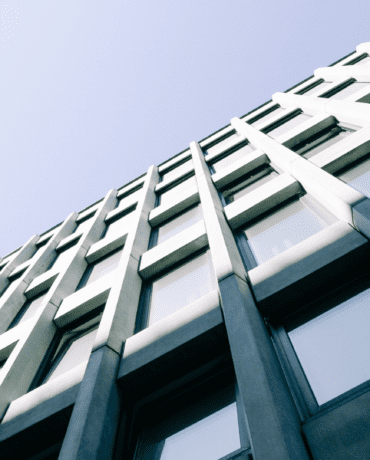Commercial Architectural Trends in 2024.
Today’s office buildings, retail stores and hospitality settings are increasingly being designed with a changing user in mind. We look at the latest commercial architecture trends for 2024, from sustainability to smart technologies and modular construction.
Commercial architecture focuses on the design and construction of commercial buildings, as well as renovation and adaptive reuse. As commercial buildings are workplaces, architects need to consider how the building will be used, always balancing function with aesthetics.
Sustainable Design and Energy Efficiency
Due to climate change concerns, the drive for sustainability and energy-efficient buildings continues to be a big focus for architects worldwide. Projects that incorporate renewable energies, such as solar panels and ground source heat pumps, are increasingly popular with businesses looking to offset their carbon footprint.
Green agendas are steering architectural concepts from the foundations to rooftop design. From sustainable, energy-efficient building materials to minimising energy consumption, every aspect of design needs to consider wastage, and lighting and heating costs.
Smart Technology and Commercial Buildings
From voice-activated assistants to lighting and temperature control, building design is increasingly being focused on smart technology. Retailers in particular are steadily integrating immersive, virtual technologies into their stores, creating ‘phygital’ and augmented customer environments. In commercial architecture, building design increasingly needs to incorporate the latest digital technologies to enhance workspaces and security.
Adaptive Reuse and Repurposing Of Buildings
In a bid to maximise brownfield sites, the trend for adaptive reuse of commercial buildings continues, often changing planning use. In the Midlands, we have seen old hosiery factories successfully redesigned to accommodate individual offices and residential care homes. From an architectural perspective, there is a drive to retain attractive historical features within the building design, balancing with sustainable elements to maximise efficiencies.
Modular Construction and Prefabricated Buildings
Over 2024, we are likely to see an increasing use of prefabricated modules for commercial builds, which can be manufactured and assembled onsite. Known as modular construction, there are various benefits to this type of building approach, including time and cost savings. Modular construction can also make use of prefabricated, environmentally friendly materials for sustainability targets, such as sustainable timber with integrated solar panels.
Wellness Experiences: Natural Light and Quiet Areas
As the changing needs of society are being echoed in architectural design, buildings are no longer designed for purely functional purposes. With a growing focus on maximising natural light and incorporating quiet areas, there is a trend for commercial buildings to support workers’ wellness. Many corporate spaces are increasingly being defined with biophilic design, linking the outdoors to green spaces using glass walls and facades.
Embrace Changing User Needs to Future-Proof Projects
In conclusion, commercial user needs are rapidly changing when compared to architectural design only a decade ago. As businesses embrace the need for greater sustainability and spaces that enhance wellness, we need to adopt emerging technologies and environmentally friendly practices.
By staying up to date with the latest architectural trends, we can future-proof our projects and develop sustainable environments that benefit us all.

Talk To An Expert
Contact UsSee More Recent Posts

Navigating the Building Safety Act 2025:...
As commercial properties tend to be more complex in almost every aspect, stricter building...

From Conversation to Action – Achieving...
According to a study conducted by the Fawcett Society in September 2023, ‘only 31%...

Care Home Design and CQC Healthcare...
Enhancing Care Home Environments for Quality Living Care homes play a crucial role in...

